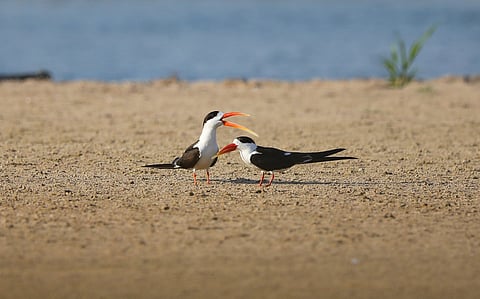
The Indian skimmer is found in India’s freshwater ecosystems
It is sensitive to changes in water quality, fish abundance and other living conditions
Its population has been declining as per the International Union for Conservation of Nature
This shows that Indian freshwater systems are not in a good state
The Indian Skimmer (Rynchops albicollis) is a denizen of the marshes, lakes and rivers of India. It is present in these areas if the water quality is good, there is enough fish to go by and other habitat conditions are amenable.
The photo above by Vikas Choudhary shows Indian skimmers at the National Chambal Sanctuary, also famously known as National Chambal Gharial Wildlife Sanctuary.
The Indian Skimmer is listed as ‘Endangered’ by the International Union for Conservation of Nature or IUCN and its population has been declining in recent years.
This shows that Indian freshwater systems are not in a good state.
The photo above by Vikas Choudhary shows Indian skimmers at the National Chambal Sanctuary, also famously known as National Chambal Gharial Wildlife Sanctuary.
The Skimmer was chosen as the mascot of the Maha Kumbh, held earlier this year, as it is found at the Sangam, the confluence of the Ganga and Yamuna rivers in Prayagraj.
It is also found along the Chambal river, among the cleanest rivers in India. The National Chambal Gharial Wildlife Sanctuary spans across the states of Uttar Pradesh, Madhya Pradesh, and Rajasthan, covering an area of over 5,400 square kilometres.